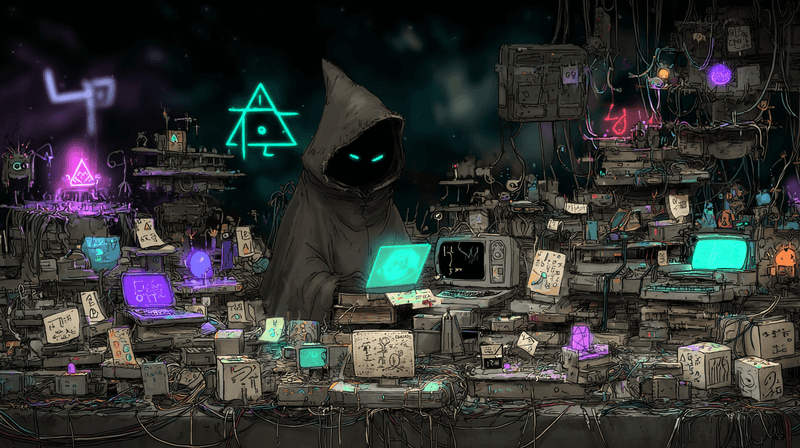Writing Code Nobody Else Can Read - A Love Letter to the Unmaintainable

Writing Code Nobody Else Can Read: A Love Letter to the Unmaintainable
The Secret Art of the Unreadable
In the hallowed halls of software engineering, there exists a secret society. Its members are not listed on LinkedIn, nor do they speak at conferences—at least, not in any language you’d recognize. Their craft? Writing code so impenetrable, so gloriously opaque, that even the most determined maintainer will, after a brief review, opt for a career in artisanal breadmaking. Welcome to the world of the Unreadable Code Aficionado, where clarity is a bug and documentation is for the weak.
The Descent into Obfuscation
It starts innocently enough. A junior developer, fresh from a bootcamp, is told to “make it work.” No one specifies for whom. The codebase grows, and with it, the opportunities for creative expression. Why use for loops when you can chain seventeen map and reduce calls, each with a callback that references a variable named after your favorite Pokémon? Why settle for snake_case or camelCase when you can invent morseCode?
The tools of the trade are many. Consider the following:
- Single-letter variable names:
x,y, andz—the holy trinity of confusion. Bonus points for reusing them in nested scopes. - Recursive functions with side effects: Because nothing says “job security” like a function that calls itself, mutates global state, and returns a different type each time.
- Regexes that look like ASCII art: If your regular expression doesn’t resemble a Jackson Pollock painting, are you even trying?
- Abusing language features: JavaScript’s
withstatement, Python’s metaclasses, C++ template metaprogramming—each a brushstroke in your masterpiece of misery.
Of course, no unreadable codebase is complete without a healthy dose of overengineering. Why use a simple array when you can implement your own doubly-linked, self-balancing, blockchain-backed data structure? After all, the future is decentralized, and so is your logic.
Let’s not forget the power of naming conventions. The true artist never uses the same convention twice. Mix PascalCase, l33tSp34k, and emoji-based identifiers for that extra touch of chaos. Sprinkle in some Hungarian notation for the retro vibe, and you’ve got yourself a codebase that’s not just unreadable—it’s a cryptic crossword puzzle with no solution.
The Existential Wisdom of the Unreadable
Eventually, the day comes when someone else must read your code. Perhaps you’ve moved on to greener pastures, or perhaps you’re simply on vacation, sipping a blockchain-infused latte. The new maintainer opens your magnum opus and is greeted by a wall of inscrutable logic, a labyrinth of callbacks, and a comment that simply reads, “Here be dragons.”
They will try, of course. They will draw diagrams, consult Stack Overflow, and even attempt to summon you via Slack. But the code resists interpretation. It is a living thing, evolving in the shadows, immune to refactoring and hostile to debugging. The only way forward is to rewrite it from scratch, thus ensuring the cycle continues.
And so, dear reader, we arrive at the ultimate truth of the tech industry: unreadable code is not a bug, but a feature. It is job security, artistic expression, and a rite of passage all rolled into one. In a world obsessed with best practices, clean code, and maintainability, the unreadable codebase stands as a monument to the enduring power of chaos.
So the next time you’re tempted to write a helpful comment or choose a descriptive variable name, remember: clarity is temporary, but confusion is forever. Welcome to the club.